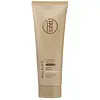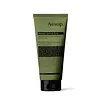What's inside
What's inside
 Key Ingredients
Key Ingredients

 Benefits
Benefits

 Concerns
Concerns

 Ingredients Side-by-side
Ingredients Side-by-side

Sucrose
HumectantGlycerin
HumectantWater
Skin ConditioningSodium Methyl Cocoyl Taurate
CleansingParfum
MaskingOryza Sativa Powder
Niacinamide
SmoothingLactic Acid
BufferingBakuchiol
AntimicrobialIsododecane
EmollientPhenoxyethanol
PreservativeSodium Chloride
MaskingXanthan Gum
EmulsifyingCoconut Acid
CleansingGlycolic Acid
BufferingEthylhexylglycerin
Skin ConditioningGuar Hydroxypropyltrimonium Chloride
Skin ConditioningBenzyl Salicylate
PerfumingLinalool
PerfumingBenzyl Alcohol
PerfumingLimonene
PerfumingCoumarin
PerfumingSucrose, Glycerin, Water, Sodium Methyl Cocoyl Taurate, Parfum, Oryza Sativa Powder, Niacinamide, Lactic Acid, Bakuchiol, Isododecane, Phenoxyethanol, Sodium Chloride, Xanthan Gum, Coconut Acid, Glycolic Acid, Ethylhexylglycerin, Guar Hydroxypropyltrimonium Chloride, Benzyl Salicylate, Linalool, Benzyl Alcohol, Limonene, Coumarin
Water
Skin ConditioningPumice
AbrasiveSodium Lauroamphoacetate
CleansingSodium Methyl Cocoyl Taurate
CleansingAcrylates Copolymer
Sodium Chloride
MaskingCoco-Betaine
Cleansing1,2-Hexanediol
Skin ConditioningPhenoxyethanol
PreservativeCitric Acid
BufferingBambusa Arundinacea Stem Extract
Skin ConditioningCitrus Aurantium Bergamia Fruit Oil
MaskingCitrus Nobilis Peel Oil
MaskingPelargonium Graveolens Extract
MaskingCoconut Acid
CleansingEthylhexylglycerin
Skin ConditioningQuartz
AbrasiveLimonene
PerfumingLinalool
PerfumingCitronellol
PerfumingGeraniol
PerfumingWater, Pumice, Sodium Lauroamphoacetate, Sodium Methyl Cocoyl Taurate, Acrylates Copolymer, Sodium Chloride, Coco-Betaine, 1,2-Hexanediol, Phenoxyethanol, Citric Acid, Bambusa Arundinacea Stem Extract, Citrus Aurantium Bergamia Fruit Oil, Citrus Nobilis Peel Oil, Pelargonium Graveolens Extract, Coconut Acid, Ethylhexylglycerin, Quartz, Limonene, Linalool, Citronellol, Geraniol
Ingredients Explained
These ingredients are found in both products.
Ingredients higher up in an ingredient list are typically present in a larger amount.
Coconut Acid isn't fungal acne safe.
Ethylhexylglycerin (we can't pronounce this either) is commonly used as a preservative and skin softener. It is derived from glyceryl.
You might see Ethylhexylglycerin often paired with other preservatives such as phenoxyethanol. Ethylhexylglycerin has been found to increase the effectiveness of these other preservatives.
Limonene is a fragrance that adds scent and taste to a formulation.
It's found in the peel oil of citrus fruits and other plants such as lavender and eucalyptus. The scent of limonene is generally described as "sweet citrus".
Limonene acts as an antioxidant, meaning it helps neutralize free radicals.
When exposed to air, oxidized limonene may sensitize the skin. Because of this, limonene is often avoided by people with sensitive skin.
The term 'fragrance' is not regulated in many countries. In many cases, it is up to the brand to define this term. For instance, many brands choose to label themselves as "fragrance-free" because they are not using synthetic fragrances. However, their products may still contain ingredients such as essential oils that are considered a fragrance.
Learn more about LimoneneLinalool is a fragrance and helps add scent to products. It's derived from common plants such as cinnamon, mint, citrus, and lavender.
Like Limonene, this ingredient oxidizes when exposed to air. Oxidized linalool can cause allergies and skin sensitivity.
This ingredient has a scent that is floral, spicy tropical, and citrus-like.
Learn more about LinaloolPhenoxyethanol is a preservative that has germicide, antimicrobial, and aromatic properties. Studies show that phenoxyethanol can prevent microbial growth. By itself, it has a scent that is similar to that of a rose.
It's often used in formulations along with Caprylyl Glycol to preserve the shelf life of products.
Chances are, you eat sodium chloride every day. Sodium Chloride is also known as table salt.
This ingredient has many purposes in skincare: thickener, emulsifier, and exfoliator.
You'll most likely find this ingredient in cleansers where it is used to create a gel-like texture. As an emulsifier, it also prevents ingredients from separating.
There is much debate on whether this ingredient is comedogenic. The short answer - comedogenic ratings don't tell the whole story. Learn more about comegodenic ratings here.
The concensus about this ingredient causing acne seems to be divided. Research is needed to understand if this ingredient does cause acne.
Scrubs may use salt as the primary exfoliating ingredient.
Learn more about Sodium ChlorideThis gentle cleansing and foaming ingredient is known for leaving a smooth feeling in skin and hair. It is made using coconut oil.
According to the manufacturer, it is soluble in water and has resistance to hard water, acid, and alkali.
Due to its coconut base, it may not be Malassezia folliculitis safe.
Learn more about Sodium Methyl Cocoyl TaurateWater. It's the most common cosmetic ingredient of all. You'll usually see it at the top of ingredient lists, meaning that it makes up the largest part of the product.
So why is it so popular? Water most often acts as a solvent - this means that it helps dissolve other ingredients into the formulation.
You'll also recognize water as that liquid we all need to stay alive. If you see this, drink a glass of water. Stay hydrated!
Learn more about Water